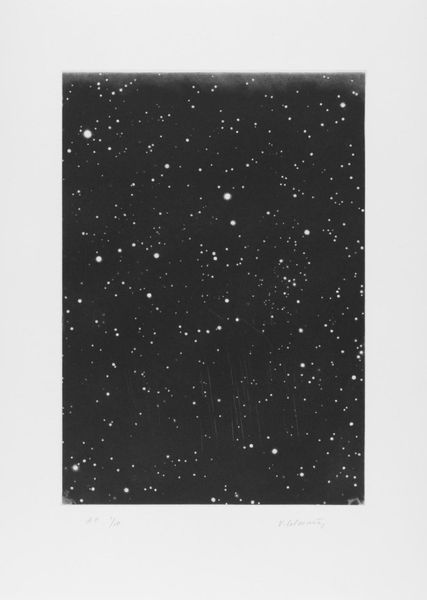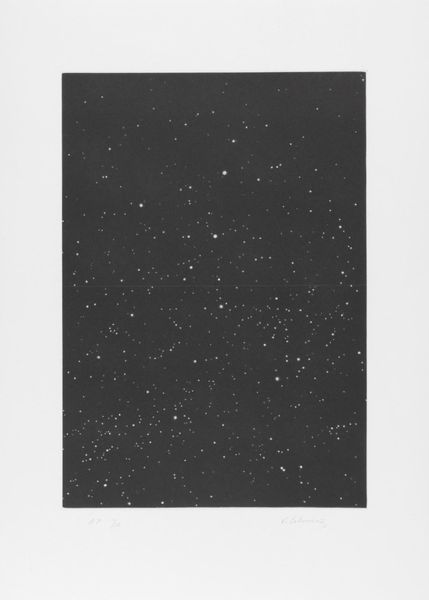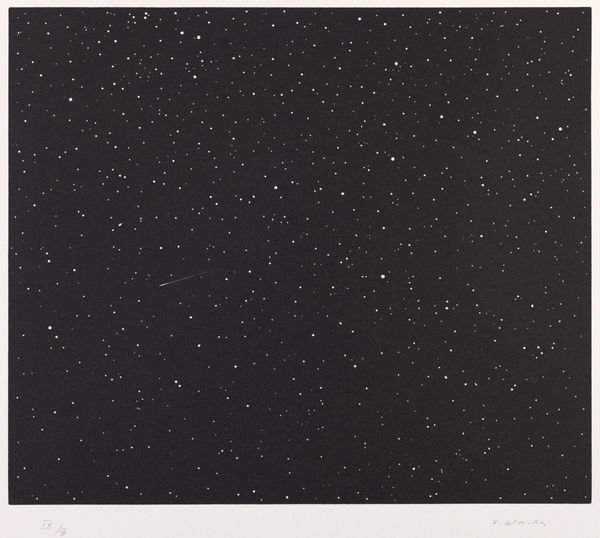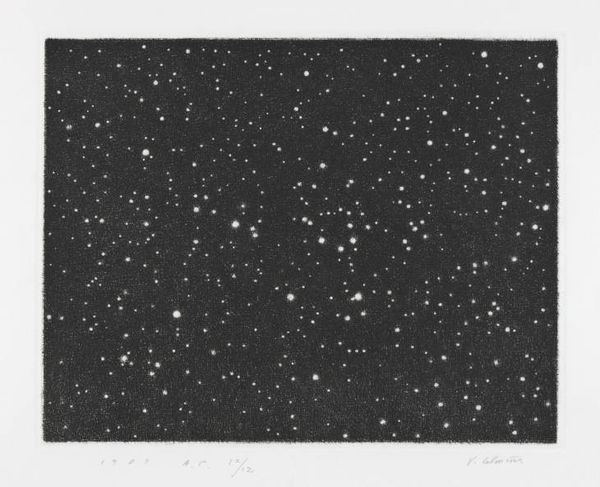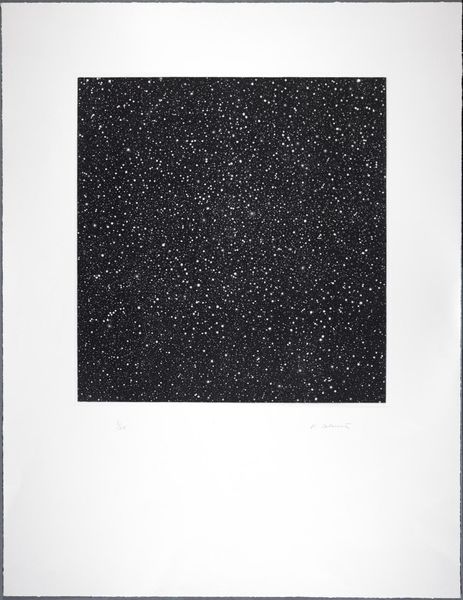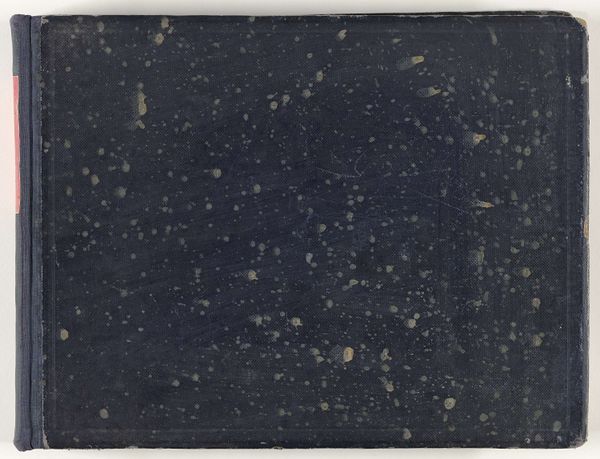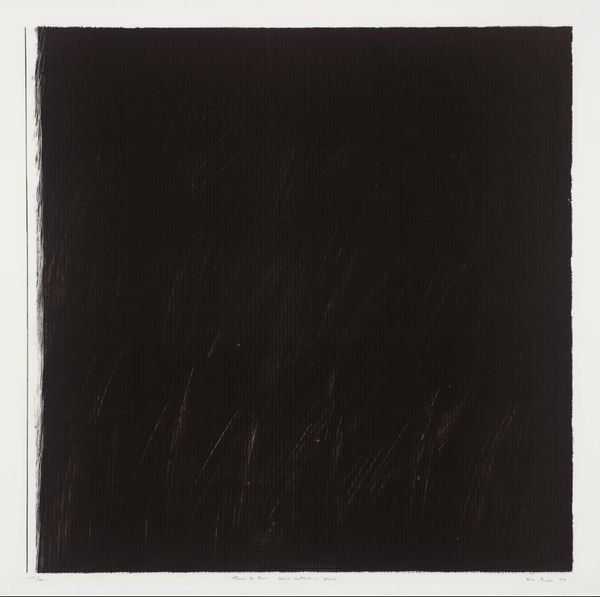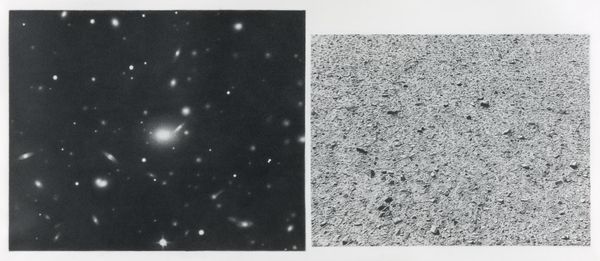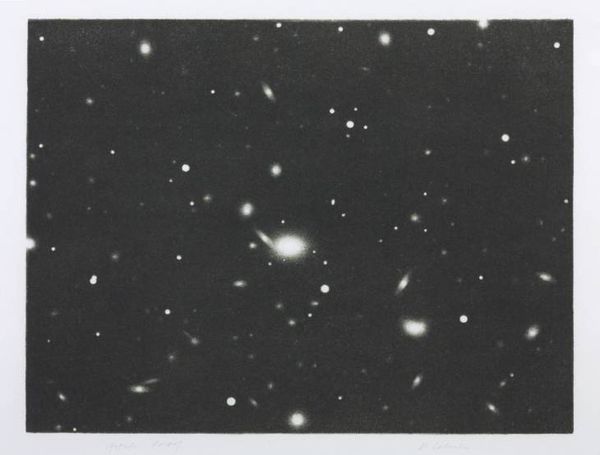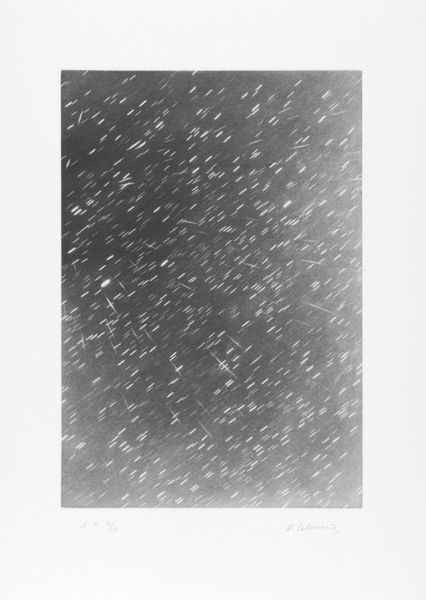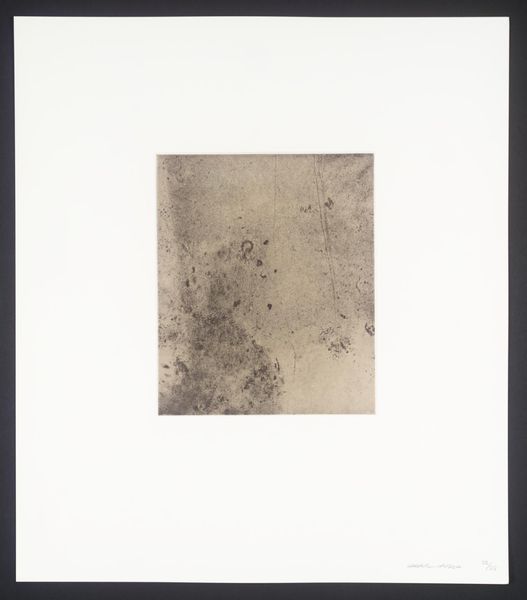
Dimensions: support: 570 x 673 mm
Copyright: © Vija Celmins | CC-BY-NC-ND 4.0 DEED, Photo: Tate
Editor: Here we have Vija Celmins' "Night Sky #19," currently held at the Tate. The meticulous detail, especially given the vastness of the subject, is striking. What story do you think this piece tells about our perception of the cosmos? Curator: It's interesting to consider Celmins’ work in the context of the sublime and its evolving representation. How does mass media, with its flood of celestial imagery, shape our understanding and, perhaps, flatten our experience of the night sky? Editor: So, it's less about the romantic ideal of the cosmos, and more about how we’ve commodified it? Curator: Precisely! Celmins makes us question the role of mediated experience in shaping our understanding of nature. It’s a quiet commentary on how images circulate and influence our perception of reality. Editor: That certainly gives me a fresh perspective. Thanks! Curator: My pleasure. It's these kinds of questions that make art so vital.
Comments
Join the conversation
Join millions of artists and users on Artera today and experience the ultimate creative platform.
tate 7 months ago
⋮
Night Sky #19 is a charcoal drawing on coated white paper that depicts a vast field of stars in the night sky. It is signed and dated by the artist at the bottom right corner of the landscape-oriented sheet of paper. This drawing – as is the case with the majority of Vija Celmins’s drawings, prints and paintings – is based on a photograph rather than the direct observation of nature. Night Sky #19, as its numerical title suggests, is one of an extensive series of night sky images produced by the artist in the 1990s, directly related to earlier representations of galaxies from the 1960s and 1970s, seen in one half of the dual-image drawing Untitled (Desert–Galaxy) 1974 (Tate AR00162). For both series Celmins obtained the source materials from books, newspapers and magazines: published photographic clippings that the artist used as a platform for her artistic production. As the art historian Briony Fer has commented:

